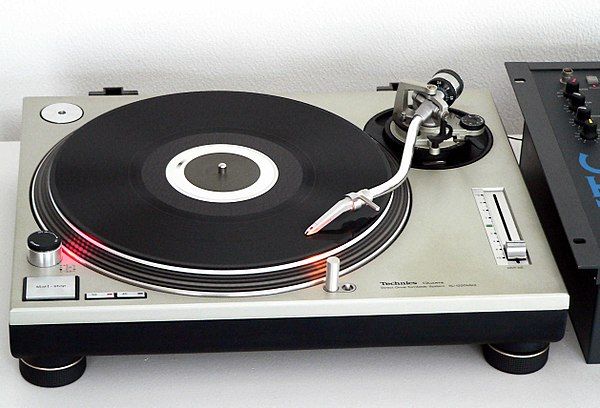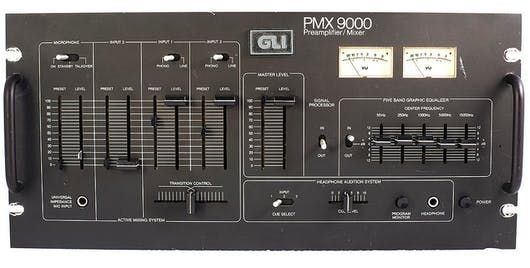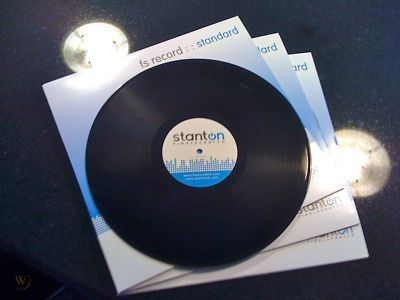The explosion of music culture in the past few decades has occurred due to a rapidly changing society, as well as the hyper-fast development of technology. DJing was born in this technological and cultural revolution and has been quickly evolving ever since.
Over the years, there have been a few pieces of gear that have funamentally altered the course of DJ history. These products went on to define decades worth of innovation and iteration, and ultimately helped shape DJing into what it is today. Let’s take a look – and if you agree, disagree, or think we’ve left something critical out, chime in on the comments.
Technics 1200 DJ Turntable
First introduced back in 1970, the original Technics 1200 sparked the hip-hop revolution that ultimately gave birth to DJing. Technics, still the de facto brand amongst audiophile DJs today, is largely accredited as the most influential brand in DJ history. The 1200 was the first turntable to be truly designed with DJs in mind, with design choices from S-shaped tonearms to powerful direct drive motors to nudge-friendly platters.

The Direct-Drive Motor
Arguably the most important feature of this turntable was the high-power direct-drive motor. Unlike consumer-style turntables, which connected the motor to the platter with a rubber pulley belt, the 1200’s drive was connected directly to the platter and spindle. This allowed the platter to be stopped, started, and nudged easily – unlike belt-driven turntables which would break under such wear.
Pitch Control Fader
Another vitally important function this turntable offered was a highly accurate 6% pitch control fader. This fader allowed beatmatching between different BPMs. While this feature was not necessarily invented by Technics, it was still a keystone inclusion in the table’s design.
This table featured many other unique features, such as an S-shaped tonearm for superior tracking stability, a rugged metal build, and a built-in tracking light for easy needle transport in dark buildings. These factors all contributed to the 1200’s role as a professional club turntable.
How did it shape history?
This turntable was designed specifically for DJs, solving many issues they faced in the past such as rapidly wearing belts and easily skipping tonearms. The combination of a direct drive motor and pitch control was perfect for both scratching and beatmatching, catering to all the gear requirements of DJs for the first time.
The 1200 and its successor, the Technics 1210 line of turntables, proceeded to become the standard in clubs and studios around the world for years to come – with every other DJ turntable to follow essentially copying the 1200’s original design.
GLI PMX 9000 Crossfader DJ Mixer

The GLI PMX 9000, first produced in 1979, was another massive driver in the development of DJ culture. It was one of the first mass-produced DJ mixers, using DJ-friendly faders instead of small knobs.
The Crossfader
What made the PMX 9000 so groundbreaking was its introduction of the crossfader, which was an integral part to the development of beat juggling and scratching. The 9000 was the first mass-produced mixer to sport a crossfader, which quickly popularized the PMX line amongst early DJs. Many other companies such as Numark, Gemini, and Vestax soon followed suit with PMX-style mixers, all offering long-throw flat-cap faders and crossfaders.
Outside of its revolutionary fader design, the PMX offered little else. It featured no per-channel EQ or gain and did not even have crossfader curve control, with such features coming later on rival mixers. Nonetheless, the mixer still sparked an “arms war” between audio companies that moved DJing from bedroom science to mainstream entertainment.
How did it shape history?
The PMX 9000 sparked the rapid development of DJ mixers that would follow throughout the next few years. This led to the popularization of many integral technologies, such as 3-band EQs and per-channel cue. The biggest thing this mixer standardized was the crossfader, which is an integral part of many different DJ techniques. Grandmaster Flash’s original DJ theory revolved around the crossfader, as did many other techniques pioneered by other DJs such as Grand Wizard Theodore.
CDJ-1000 Vinyl-Emulation CD Player

Pioneer’s CDJ-1000, released in 2001, rivals the Technics 1200 in its pure ingenuity for the time of its release. It later became known as the mk1 model, once the mk2 model was released.
Shifting with the times: the CD movement
In the late 1990s and early 2000s, the world was making the transition from analog to digital, with CDs slowly replacing cassettes and records. However, DJs still used vinyl almost exclusively, due to lack of a better option. At the time, CD players were primitive and counter-intuitive, with no scratch control and no easy transport system. They thus were almost useless to DJs, especially compared to turntables.
The Jog Wheel
The CDJ-1000, however, changed all that and more. It launched using a revolutionary “jog wheel” technology that provided a turntable-like way to manipulate a track. The wheel was essentially a giant, 7-inch encoder. When the wheel was nudged, it would slow and speed the track, and when it was pushed in and manipulated, it would scratch the track. This tech sealed the deal for many digital DJs, allowing the transition to digital from vinyl in clubs around the world.
Cue Points
In addition to this revolutionary tech, the DDJ 1000 also offered a number of other exciting features. It had a revolutionary “cue point” system that allowed for the user to set markers on each track that could be jumped to at the press of a button. Three of these cues, called hot cues, could be launched seamlessly, while the rest, called “memory points,” would stop the track and require time to load.
A Digital World
The reasons why DJs were so keen to switch to digital were numerous. Instead of having to lug crate after crate of records to and from each gig, DJs could simply carry a booklet of CDs sorted by genre. The endless war against needle skips was no more. Numerous new ways to mix and perform were brought to life. Perhaps the most important advantage was that DJs could play and actually scratch with their own tracks in the club, which was a literal dream come true.
How did it shape history?
The CDJ-1000 changed history by bringing the digital revolution to the DJ industry. Its design is still used in clubs today, with the latest models of Pioneer CDJ serving as the industry standard. The CDJ’s jog wheel technology is used in almost every DJ device imaginable, and its layout serves as the inspiration for many gear designs today.
Stanton’s Final Scratch With DVS

Stanton’s Final Scratch was the first DJ-oriented software, helping to transform the DJ industry entirely. Even with the advance of CDJ technology, many DJs still insisted on using vinyl for its larger, motorized scratch surface. There was a lack of options for serious scratch DJs (yes, this was before Serato control vinyl) at this time, as the DJ industry was still exclusively hardware-based, with CDJs and vinyl serving as the only ways to play.
Digital Vinyl System Technology
Final Scratch essentially served as the first computer playback method of music for DJs. It used a technology called DVS, or “Digital Vinyl System,” to control the playback of computer-based tracks using turntables. Final Scratch read special records called “timecodes” that were pressed with a modulated signal. This signal was fed into the PC via an audio interface and parsed by the software, which played tracks that essentially “followed” turntables. When the DJ stopped the record, the digital track stopped. When the DJ scratched the record, the software scratched the track. This tech was adopted by all but the most old-school DJs, bringing the superior control of vinyl back into play.
An evolution to Traktor Scratch
Final Scratch was eventually bought by Native Instruments and transformed into a new software named Traktor Scratch in 2003. This software could either be controlled by vinyl or MIDI, which was a huge innovation for budget DJs. Early controllerists, including DJTT’s own Ean Golden, began using MIDI keyboards to control the software instead of turntables or CDJs, as MIDI controllers were substantially cheaper than either “orthodox” option.
How did it shape history?
The introduction of Final Scratch finally brought DJing to personal computers, giving better library management and storage options than flash sticks and the relatively primitive browsing systems of early CDJs. This development would pave the way for DJ controllers to eventually become the most popular way for bedroom and mobile DJs, as well as spawning an entirely new genre of live performance known as controllerism.
VCI-100 Controller

The VCI-100 controller was arguably and almost solely responsible for shifting digital DJing into the mainstream. It was the dedicated DJ controller that provided CDJ-style control over Traktor’s software. It offered CDJ-style jog wheels that could be used to scratch, a full two-channel mixer, effect control, and hot cues all in one unit, which cost only $600.
A 2-Deck and Mixer Setup
A few controllers before the VCI-100, such as the Hercules DJConsole, were released earlier on – but they were extremely limited, with non-scratch-capable jog dials, no effect control, and confusing layouts. The VCI-100 attempted to provide a design that would feel familiar to both traditional and controllerist DJs, using a “two decks and a mixer” layout.
This controller, along with its even more successful Mk2 version, were used by almost every digital DJ at the time. DJs such as Ean Golden, DJ Shakey, and Moldover all used this controller, either by itself or combined with other devices.
The Birth of DJ TechTools
The VCI-100 actually played a key role in the roots of DJ TechTools. Ean Golden, DJTT’s founder, decided to mod his VCI-100 to add in arcade buttons for cue drumming. He started blogging his progress on this mod, creating the DJTT website for this purpose.
How did it shape history?
The VCI-100 was the first controller that was a comparable option to a CDJ and mixer setup. It popularized the use of DJ software and provided a feature-packed, affordable device for beginner DJs and controllerists alike.
The VCI-100 also sparked a “controller arms race” amongst brands such as Pioneer, Denon, and Native Instruments. This race led to the development of many beloved controllers such as the MC6000, DDJ-SX, and Kontrol S4. The 100’s influence can be seen in almost every controller today.
This gear all helped to change music itself. The SL-1200 birthed DJing, the PMX 9000 helped make it mainstream, the CDJ-1000 brought it into the digital era, and Final Scratch with the VCI-100 made it affordable and open to almost everyone.
Curious to keep exploring the history of DJ gear? Check out this piece on DJ controllers that never quite made it to market, but still made a big impact.




